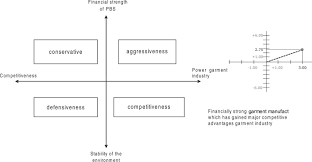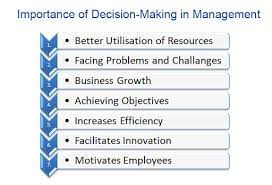The Art of Decision Making: Navigating Life’s Crossroads
Life is a series of choices. From the simplest daily decisions to the more complex and life-altering ones, decision making is an integral part of our existence. Whether it’s choosing what to have for breakfast or deciding on a career path, our lives are shaped by the decisions we make.
But how do we navigate through the sea of options and possibilities? How do we ensure that the choices we make align with our values, goals, and aspirations? The answer lies in mastering the art of decision making.
Decision making is not just about randomly picking an option and hoping for the best outcome. It requires careful thought, analysis, and consideration. Here are some key principles that can help guide you on your decision-making journey:
- Define your objectives: Before making any decision, it’s crucial to clearly define what you want to achieve. What are your goals? What outcomes do you desire? Having a clear understanding of your objectives will help you evaluate choices more effectively.
- Gather information: Informed decisions are better decisions. Take the time to gather relevant information about the options available to you. Research, consult experts or trusted sources, and consider different perspectives. The more knowledge you have, the better equipped you’ll be to make an informed choice.
- Evaluate pros and cons: Create a list of advantages and disadvantages for each option under consideration. Assessing the potential benefits and drawbacks will provide you with a clearer picture of what each choice entails. Consider both short-term and long-term implications.
- Trust your intuition: While analysis is important, don’t overlook your gut feeling or intuition. Sometimes our instincts can provide valuable insights that rational thinking may miss. Learn to listen to that inner voice when it comes to making tough decisions.
- Embrace uncertainty: No decision comes without some degree of uncertainty or risk. Accepting this reality can help you make peace with the unknown and move forward with confidence. Evaluate the potential risks, assess your risk tolerance, and be prepared to adapt if needed.
- Learn from mistakes: Not every decision will lead to the desired outcome. Mistakes are inevitable, but they can also be valuable learning opportunities. Instead of dwelling on regrets, analyze what went wrong and use that knowledge to make better decisions in the future.
- Seek advice and support: Don’t hesitate to reach out for help when making important decisions. Seek guidance from mentors, friends, or professionals who have expertise in the relevant area. Their insights and perspectives can provide valuable clarity during the decision-making process.
Remember, decision making is a skill that can be honed over time. It’s not about always making the perfect choice but rather about making informed decisions that align with your values and aspirations. Embrace the process, trust yourself, and have faith that each decision is an opportunity for growth.
So, as you navigate life’s crossroads, approach decision making as an art form – one that allows you to shape your own destiny and create a life filled with purpose and fulfillment.
Common Questions About Decision-Making: Elements, Types, and Synonyms
- What are the 3 elements of decision-making?
- What are the 5 elements of decision-making?
- What are the 4 types of decision-making?
- What is another word for decision-making?
What are the 3 elements of decision-making?
The three elements of decision-making are:
- Alternatives: Decision-making involves considering different options or alternatives that are available to choose from. These alternatives can vary in terms of their potential outcomes, benefits, risks, and consequences. Identifying and evaluating the various alternatives is a crucial step in the decision-making process.
- Criteria: Criteria are the standards or factors that you use to evaluate and compare the different alternatives. These criteria can be based on personal values, goals, preferences, or specific requirements related to the decision at hand. By establishing clear criteria, you can objectively assess how well each alternative meets your needs and expectations.
- Consequences: Consequences refer to the potential outcomes or results of choosing a particular alternative. This element involves considering both the immediate and long-term effects of each option on various aspects such as personal well-being, relationships, finances, career, and overall life satisfaction. Evaluating the consequences helps determine which alternative aligns best with your desired outcome.
By considering these three elements – alternatives, criteria, and consequences – individuals can make more informed decisions that take into account their goals, values, and circumstances. This systematic approach enhances clarity and rationality in decision-making processes across various domains of life.
What are the 5 elements of decision-making?
The 5 elements of decision-making are as follows:
- Identify the problem or decision to be made: This is the first step in the decision-making process. Clearly define and understand the issue at hand. What is the problem you need to solve or the decision you need to make? Having a clear understanding of what needs to be addressed is essential.
- Gather relevant information: Informed decisions require gathering all necessary information related to the problem or decision. This includes facts, data, opinions, and insights from various sources. The more comprehensive and accurate your information, the better equipped you’ll be to make an informed choice.
- Evaluate alternatives: Once you have gathered the necessary information, it’s time to assess different options or alternatives available to you. Consider the potential benefits, risks, costs, and consequences associated with each alternative. This evaluation process helps narrow down your choices.
- Make a decision: After evaluating alternatives, it’s time to make a decision. Choose the option that aligns best with your goals, values, and desired outcomes. Trust your judgment and consider both rational analysis and intuition when making your choice.
- Implement and review: Making a decision is not enough; it needs to be put into action. Develop an action plan and execute it accordingly. Additionally, regularly review and evaluate the outcomes of your decision. Assess whether it has achieved the desired results or if adjustments need to be made.
Remember that decision-making is an ongoing process that requires continuous evaluation and adjustment as circumstances change. These five elements provide a framework for making thoughtful decisions that can lead to positive outcomes in various aspects of life.
What are the 4 types of decision-making?
There are several different models and frameworks that categorize decision-making into various types. One commonly used framework identifies four main types of decision-making:
- Routine Decision-Making: These are everyday decisions that we make on a regular basis, often without much conscious thought. They are typically low-risk and have little impact on our lives in the long term. Examples include deciding what to wear, what to eat for lunch, or which route to take to work.
- Tactical Decision-Making: Tactical decisions are more complex than routine decisions but still involve familiar situations and predefined procedures or guidelines. They require some analysis and evaluation of available options but can be made relatively quickly. Examples include choosing between different marketing strategies for a campaign or determining the best approach to solve a recurring problem at work.
- Strategic Decision-Making: Strategic decisions are high-stakes choices that have a significant impact on an individual, organization, or society as a whole. These decisions involve assessing long-term implications and considering various factors such as goals, resources, risks, and opportunities. Strategic decision-making requires extensive analysis, planning, and careful consideration of multiple alternative courses of action. Examples include deciding on a company’s expansion into new markets, making major career changes, or developing a long-term financial plan.
- Crisis Decision-Making: Crisis decisions are made under urgent and highly stressful conditions when immediate action is required to address unforeseen events or emergencies. These decisions often involve limited time for analysis and require quick thinking, prioritization of critical factors, and the ability to adapt rapidly to changing circumstances. Examples include responding to natural disasters, managing public health crises, or making split-second decisions in life-threatening situations.
It is important to note that these categories may overlap in real-life scenarios, and decision-making processes can vary depending on individual circumstances and contexts. Understanding these different types of decision-making can help individuals develop appropriate strategies for approaching each situation effectively.
What is another word for decision-making?
Another word for decision-making is “judgment.”



